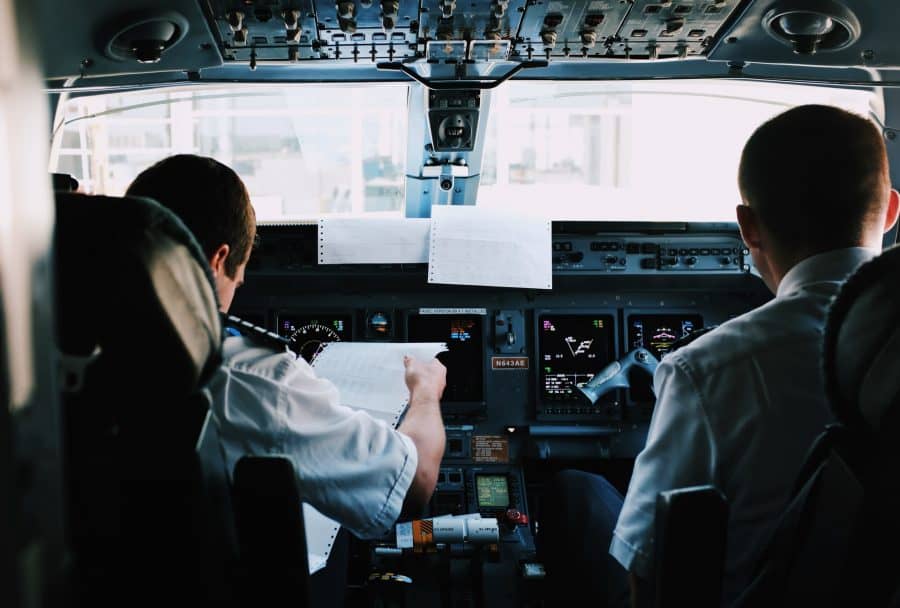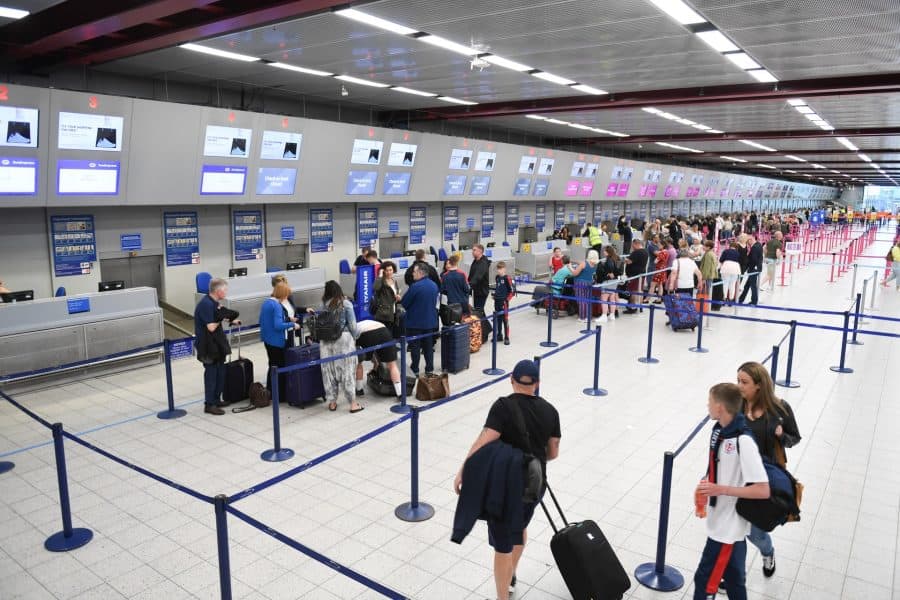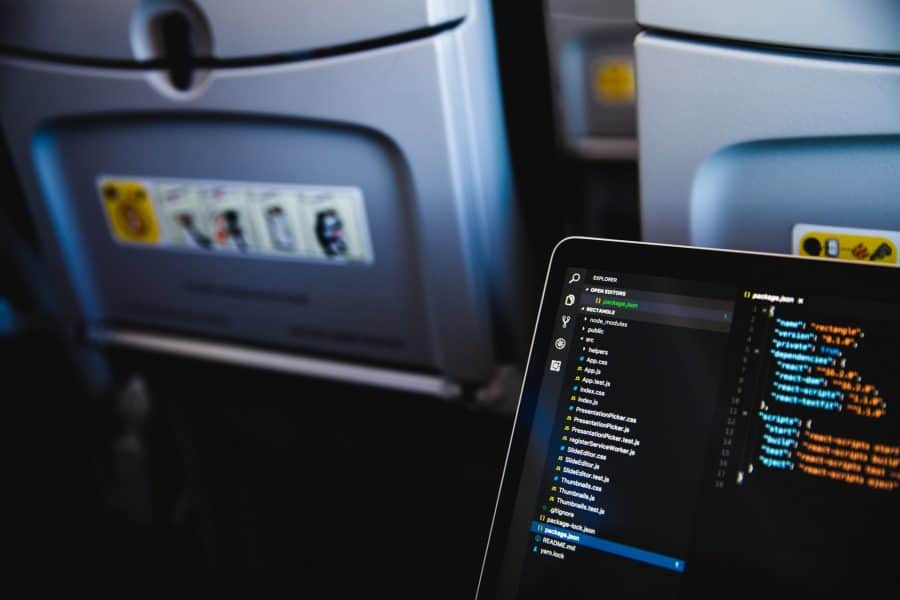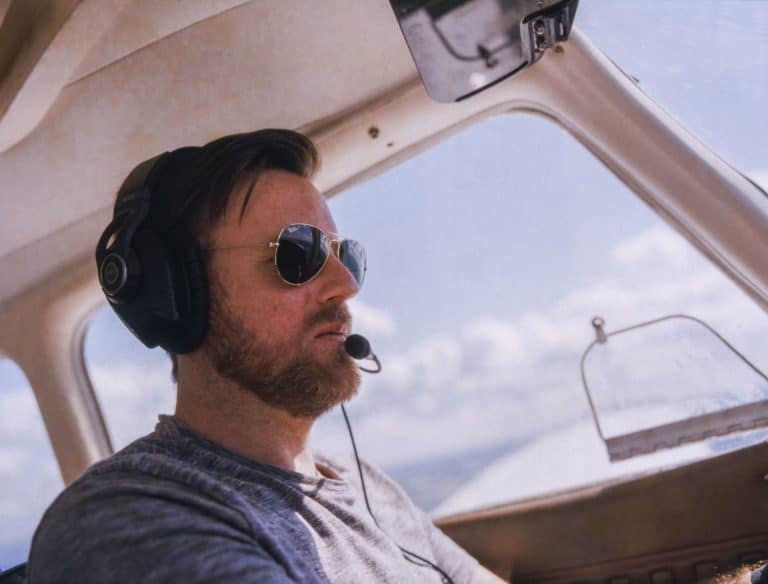Do Pilots Sleep While Flying and How Do They Rest?
Pilots often work long hours, and at various times of the day and night. They must be well-rested to do their job effectively. This is particularly true during periods of high workloads, such as take-off and landing.
Pilots do sleep during the flight; however, they don’t just take a nap whenever they feel like it. There are set procedures in place to ensure that any rest is taken in the safest manner possible. There are different arrangements in place, depending on the type of aircraft and type of flight.
Why do pilots take a rest?
Pilots are subject to the same stresses and strains that we all face on a day-to-day basis. The problem for pilots is that they are expected to perform one of the most critical parts of their job at the very end of their ‘drive’, the landing.
Numerous studies have shown that an individual’s performance in any task is degraded if they are tired. In extreme cases, tiredness can cause impairments to reaction times that are similar to if a person had drunk alcohol. Having the ability to think and react quickly is of vital importance to pilots, especially during the landing. Therefore, if they can take a quick nap at a non-critical time, they can ensure that they are fresh and alert when it really counts.
Do pilots fly when tired?
Pilots do fly when they are tired, but there are rules to prevent this from becoming a problem. There is a huge push within the aviation industry to reduce a condition known as fatigue. Fatigue is a condition of chronic tiredness. It usually comes about as a result of not being able to rest over a long period, such as consecutive days or weeks.
Tiredness is a normal human condition that everyone faces. Fatigue is a dangerous condition that airlines and pilots seek to avoid at all costs.
What measures are in place to prevent pilot fatigue?
Most fatigue reduction measures take place at an administrative level within an airline and focus very much on a pilot’s roster.
Between each duty, a pilot must be permitted to rest for a sufficient amount of time. This is usually a minimum of 10 hours between each flight. But it can get even more restrictive for roster planners.
If the pilot has a long flight, it stands to reason that they may be more tired, and therefore need more rest. In this case, the pilots’ rest must be increased to match the total number of hours they were in work on their previous flight.

For example, let’s imagine a pilot arrived an hour before their flight was due to take off. They then flew on a very long sector of 14 hours. Then they worked for an additional hour after the flight landed. This would total 16 hours of duty time. The pilot would legally need 16 hours of rest before he could report to work again.
There are even more rules placed on an airline rostering department to help protect against pilot fatigue. Most airlines have a policy of never scheduling more than three-night flights in a row. They also often have a limit on how many consecutive early morning flights a pilot can complete.
The final barrier against fatigue rests with the pilot. Most airlines have a system known as a ‘fatigue risk management system’ or simply ‘FRMS’. This system allows a pilot to report ‘unfit’ for duty due to fatigue, without fear of recrimination from the airline. If a pilot reports fatigued often, they may be required to speak to a medical professional. This is to assess if changes in their lifestyle could help their sleeping patterns, or to identify any underlying causes.
Causes of fatigue can be varied. These may include poor roster planning, unexpected delays down route, or even the pilot’s neighbours having a loud party while they were trying to sleep!
What are the rules for pilots sleeping while flying?
Tiredness is a natural phenomenon which we have all felt. While it can be unsettling, it is in fact entirely normal for a pilot to take a rest during the flight. It is better that the pilot has a ‘quick 15 minutes’ and is alert and awake for the landing, than to ‘try and battle through’ and face the genuine prospect of making an error due to tiredness.
Pilots don’t just fall asleep whenever they feel like. There is a procedure called ‘controlled rest’ that is governed by several rules to ensure that a quick nap doesn’t jeopardise the safety of the flight.
First, a pilot is only permitted to take controlled rest in the cruise. The cruise is what is referred to as a period of ‘low workload’. Cruise sectors usually are hundreds of miles in a straight line and require minimal effort to maintain. Further to this, the airplane is at altitude, meaning there is time to react and wake up if an emergency were to develop.
The pilot is not permitted to take controlled rest in the hour preceding the landing. The reason for this is that they must have enough time to ‘wake up’ fully, and not feel groggy during the approach.
The pilot requiring a controlled rest must ask their colleague in the flight deck if they are well-rested. It would be no good to take a controlled rest only to wake and discover the co-pilot had accidentally drifted off too!
The cabin crew are generally informed that the crew in the flight deck must not be disturbed. This is to prevent the pilot from being woken up while they are trying to rest. The cabin crew are also given a time at which the controlled rest period comes to an end, and then they can come in. To guard against the slim possibility of both pilots falling asleep, the remaining ‘awake’ pilot will make regular calls on the interphone system every 10 minutes or so. Informing the crew that they are still awake. If the cabin crew don’t receive a call, they will come in to check.
Pilots are limited to the amount of time they can sleep. This limit is around 30 minutes as a maximum. while you may not be aware, when people sleep, they go through several ‘cycles’. The last phase of sleep, or ‘deep sleep’, is challenging to wake up from quickly. By limiting the time that a pilot sleeps, it ensures that they do not enter this phase. A quick nap is the aim of a controlled rest, not a sustained sleep.
Obviously, controlled rest is only permitted on multi-pilot aircraft. Most pilots will ‘brief’ each other before taking a controlled rest. The brief will include pertinent points that the other pilot needs to know. This might include which direction to turn if there is an emergency. Other things might include the nearest en-route diversion airports or any weather that is to be expected. Perhaps most importantly, they will clarify who is flying the aircraft and handling the communications, by using the phrase “you have control”.
Suppose the pilot is going to sleep in his seat. In that case, they must move their seat, feet and hands away from the controls to ensure that they don’t make any sudden unintentional inputs.
Where do pilots sleep?
Pilots on short and medium-haul jets tend to sleep in their seats, at the controls.
Long haul aircraft have a couple of options. A resting flight crew member may utilise the 3rd seat in the flight deck, alternatively some very large aircraft have a crew rest area.

Crew rest areas vary in quality, some are dedicated lie down beds located in a compartment in the rear of the aircraft, some airlines cordon off an area of the cabin for the crew to rest.
What is the difference between controlled rest and bunk rest?
Controlled rest and bunk rest are different in several ways. Generally, a ‘controlled rest’ refers to an impromptu nap (remembering the rules above) that a pilot may use to reduce tiredness. ‘Controlled rest’ is the name of a procedure used to take this nap.
‘Bunk rest’ is generally planned in advance before the flight. Bunk rest, as the name would suggest, takes place in a crew rest area onboard the aircraft. It is a method used during ultra-long-haul trips. These flights typically involve two sets of flight crew, so four pilots in total.
The flight may begin with a captain and co-pilot at the controls and the other two pilots in their bunks. After a given amount of time, the crews will switch. The pilots who were resting will come to the flight deck, well-rested, to take over the flight, while the previous pilots will now head back for their share of ‘bunk rest’. By utilising this system, operators can ensure that pilots flight duty limitations are not exceeded.
What do pilots do during a flight? are they allowed to text.. use their phone?
Generally, pilots are not allowed to text or use their phone in flight. Many operators even include it as part of the pre-start checklist, so? Mobile and electronic devices: Off! From a practical point of view, it shouldn’t be possible to use a phone in flight anyway, after all, there isn’t much signal at 36,000ft! That said, the views from the cockpit can be amazing. Pilots do occasionally take a quick snap on their camera.
Generally, if the flight crew are doing their job right, there are few periods where the pilots have absolutely nothing to do, as there is a lot to think about. Planning ahead is vital for commercial pilots. Quiet time is the best time to think about what is going to happen next.
All that said, there are occasions where everything is going well, and flight conditions are smooth up in the cruise. In these instances, the pilots tend to have a good chat about whatever is on their mind (usually the airline management). Often a member of the cabin crew may come in to get a little break from the demands of the passengers.
It can be a miserable experience if you are on a flight with a crew member who doesn’t talk or is in a bad mood. Some pilots bring a book to guard against such flights. However, it is worth noting that there are two pilots in the flight deck at all times, so the aircraft is always being actively monitored.
Do pilots have their own bathroom?
This is a commonly asked question, the answer to which is, no, pilots do not have their own bathroom. The cost to aircraft manufacturers to fit a bathroom in the flight deck would be astronomical. Besides which, cockpits tend to be pretty cramped, this would only be made worse if space was further reduced by a bathroom! Needless to say, the flight crew tend to pop back to the passenger bathroom nearest the flight deck if they need to ‘answer the call of nature’.
There is one exception where flight crew may be allocated a ‘crew only bathroom’. Suppose an outbreak of sickness occurs on the flight, such as food poisoning. In that case, the flight crew mustn’t be placed at risk of becoming incapacitated by being exposed to it. In this instance, a passenger bathroom would be taped off and designated as ‘crew only’.
In summary
Pilots do sleep during the flight from time to time, but only for short periods during times of relatively low workload. For longer flights, a crew may be allocated bunk rest. Generally, airlines do their utmost to reduce the possibility of a pilot flying tired. However, things like unforeseen delays or high workloads can lead to tiredness. There are systems and rules in place to ensure that when a pilot ‘catches a few Z’s’ it is done so in a safe manner.
More from AirportNerd
The Complete Guide to Airplane Window Shade Etiquette
Picture this. You are sitting in the most undesired seat on the airplane, the middle…
Why Do Airlines and Airports Use 24-Hour Time?
The culprit of many missed flight connections: distinguishing between 12-hour and 24-hour clocks. While most…
Why Are Airports Named After U.S. presidents?
Donald Trump has been in the news for wanting to rename Palm Beach International Airport…
Why Do Laptops Get Special Attention at Airport Security?
?Shoes off, laptops out, liquids in zip lock bags, all in separate trays!? Frequent flyers…







